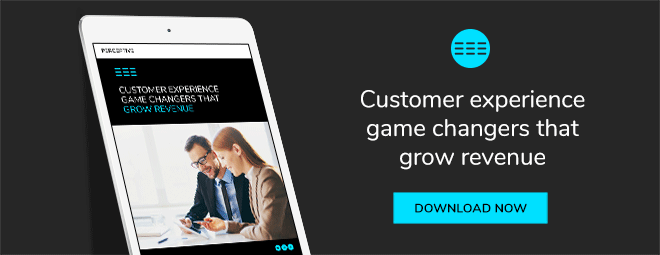As an aspiring CX leader or champion, it's essential to understand the four elements that leading customer experience businesses excel in: self-evaluation, knowing their customers, customer journey understanding, and critical touchpoint understanding. The great news is you can also develop expertise in these areas. Here's how.
1. Evaluate where you currently are
As a starting point for any customer experience (CX) programme, there are four important questions that every aspiring CX leader or champion needs to ask themselves. These are:
- Are you truly a customer-focused leader?
- What business initiatives are you undertaking that makes you a customer-focused leader?
- Is your business (the way it operates and manages its customer journeys) truly customer-led?
- What are you doing today to listen to and understand your customers and how will this make a difference to your bottom line?
Being clear on the answers to these questions will help lead you to CX success.
Related content: The common pitfalls of customer experience management
2. Understand your customer journey
Today's customers hold the companies they deal with to high standards. Products or services that are easily available, do not require many (if any) upgrades, and come with great customer service will create a superior customer journey.
Take the time to understand your customer journey from start to end, rather than looking at the isolated customer touchpoints. With the whole picture in place, your business can maintain focus and ensure consistency across the whole experience, which will have the best impact on customer satisfaction and revenue performance.
3. Determine what’s important to your customers
Once you understand your customer journey, the next stage is to assess how well you manage that journey for your high-value customers. This will help you focus your efforts. This invariably comes down to learning what is important to those customers.
This requires detailed research and customer feedback analysis. Assuming to know what your customers want and need is not the same as knowing. Making assumptions means you're guessing—and sometimes you can guess wrong. That doesn’t happen with real research and data, and having it will not only improve your CX, but your bottom line performance.
4. Measure experience across your customer journey
Big data and advanced analytics can reveal what customers say about their experience with your brand, the products and services your customers like, and even the customer behaviours that create economic value.
Tools such as online surveys, in-depth interviews, social media listening and focus groups, will help you examine the voice of your customer and highlight how well you’re managing your journeys. It’ll also help you identify the most important journeys and define the critical stages of those journeys: the touchpoints that make or break a sale. Once you know their strengths and weaknesses, you can start the process of redesigning and improving the experience.
If you’re short on budget or time, at the very least send out regular online surveys to your customers to provide you with a basis upon which you can make informed decisions.
Learn more about customer experience strategies for businesses wanting to be customer-led and grow their revenue, get our Customer experience game changes guide here:

